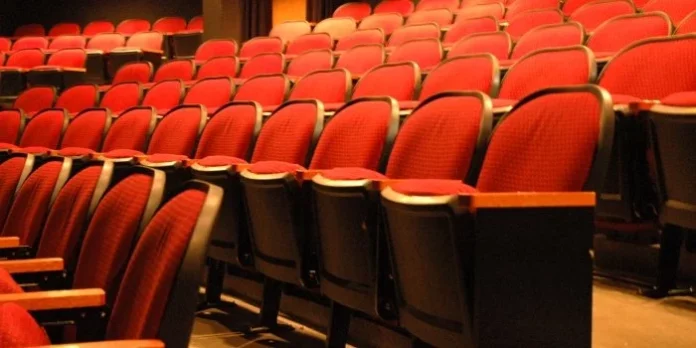In Hakanaï, deceptive simplicity is the rule.
Everything about the production seems uncomplicated: the set is a screened-in cube surrounded by four pools of light. The only other light comes from projectors sending basic, black and white images drifting across the screen. The lone dancer (Akiko Kajihara) wears a simple white costume. Her movements are slow, smooth, and quiet.
On the surface, it is incredibly simple, and yet there is so much at play in Hakanai.
First, the technology. Hakanaï is a part of MOCO, an international workshop on movement and computing held at SFU Woodwards. The projections that move across the screen are actually influenced and at times controlled by the movements of Kajihara. The moment she enters the cube, the projections shift and respond – they are a performer all on their own, referred to in the program as a “Digital Performer”. The final stage of the production is an interactive art installation – once Kajihara has left the stage, the Digital Performer remains and audience can enter and interact with the projections as well.
With themes of computing, movement, and dreams, Hakanaï seems to reflect our relationship with personal technologies in general. When Kajihara enters the cube she first moves carefully, shaping and molding the world around her with the same gentleness and reverence that many of us find in ourselves when we meet a new and astounding technology.
Quickly she embraces the power and creativity available to her, transforming her world into something beautiful and wondrous, as she dances with the projected light as if it were a scarf in the wind. Of course, just as our encounters with technology, the dynamic quickly shifts from something beautiful that adds wonder to life to something daunting and even oppressive. Ultimately the dance is not just between her and the light, but between her control and being controlled.
Overall the design and execution was stunning, but there were times that the technology seemed to fall just short of my hopes. This is part of the danger of working with a new technology in performance: our imaginations quickly move beyond their capabilities. In this case, the images seemed to only be able to respond to larger, more dramatic movements, while Kajihara had some lovely intricate movements in her extremities that I longed to see reflected in the projections.
The only other place Hakanaï was lacking was in its slightly prolonged explorations of single images or moments. There were times when the performance dragged somewhat, although Kajihara’s incredibly skilled movements are certainly worth the minor lags.
Hakanaï continues as part of the 2nd International Workshop on Movement and Computing on August 14. Visit https://moco.iat.sfu.ca for more information.

